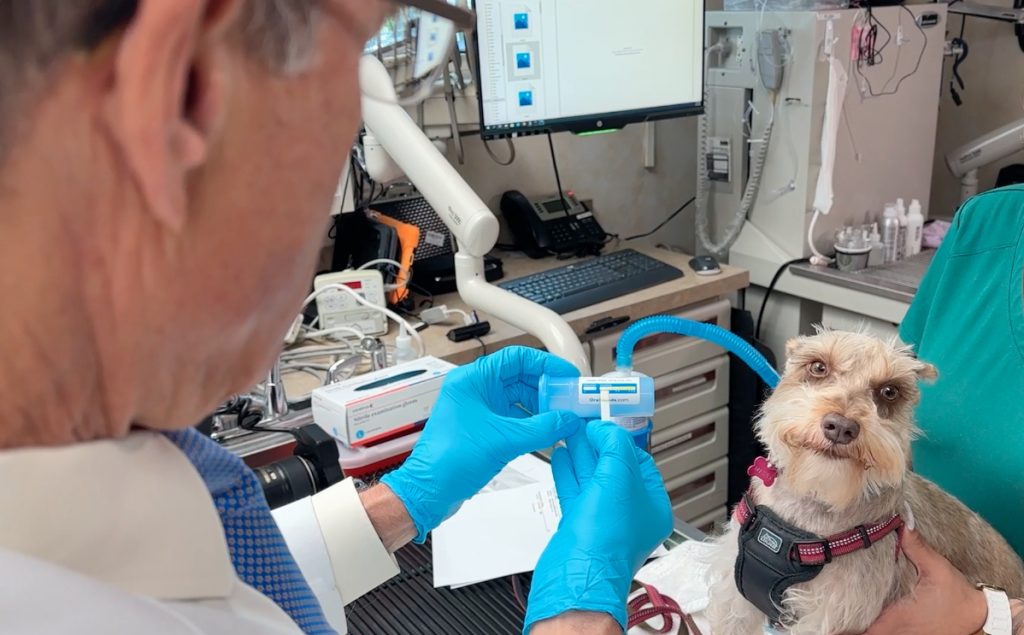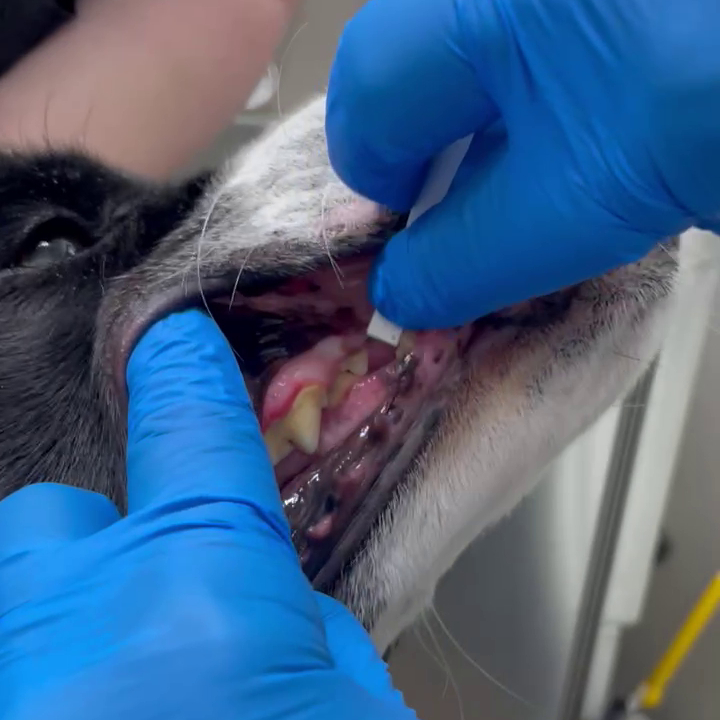
Veterinary medicine is a team sport, and oral health is one area where every member of the practice can make a significant impact on pet health.
Over the past few years, the veterinary profession has focused on the team approach. According to the American Animal Hospital Association (AAHA) 2023 Technician Utilization Guidelines, the profession is reminded utilizing credentialed veterinary technicians’ skill sets and knowledge benefit the entire veterinary team by supporting professional longevity, mutual trust and collaboration, improved patient care, and financial sustainability.1 The team-based approach optimizes efficiency and subsequently can increase access to veterinary services and improve patient care. This approach also contributes to financial sustainability for the practice.
In fact, hospitals where veterinarians and credentialed veterinary technicians work as a team and thus veterinarians rarely perform tasks credentialed veterinary technicians can do, show an average revenue increase of 36 percent.1
In addition, the 2019 AAHA Dental Guidelines assert credentialed veterinary technicians and veterinary assistants should play a prominent role in the dental care of cats and dogs. Highly efficient veterinary practices, especially those with a focus on preventive oral care, fully use and empower team members in both the exam room and the dental suite.2
Engaging the team
The veterinary profession is currently facing staff shortages, low appeal, low retention of skilled professionals, burnout, mental health challenges, and lack of patient access to care. Using a team approach to address the significant challenges veterinary practices now encounter is crucial.
Every team member is passionate about their specific role and how that role benefits patients. No veterinary team member wants to see a pet in pain; thus, we see the importance of working together to identify and alleviate potential health issues.
Using dental health as an example, veterinary care team members know animals require care to maintain oral and systemic health. However, dental health is seldom top of mind for pet owners. Additionally, many animals hide pain and obviously cannot tell the caregiver where it hurts. Oral malodor, changes in eating behavior, and drooling, are often accepted by owners as “normal behavior” in pets and do not always equate them with periodontal disease. Thus, it is imperative the veterinary team work together to remind clients a pet cannot truly be healthy if they have periodontal disease.
The oral cavity is constantly inundated by bacteria and provides the perfect environment for microbial growth. Animals require dental care to maintain overall health, just as humans. Dental disease causes pain and discomfort; and the associated disease processes may lead to systemic issues.3
Veterinary teams should, therefore, make sure they keep oral health top of mind for every patient at every visit. While this effort is highlighted in yearly events, such as the National Pet Dental Health Month in February, veterinary teams should be focused on educating pet owners about the oral health of their pet year-round.

The benefits of ‘stripping’Diagnostic tools veterinary technicians can administer, which will be interpreted by a veterinarian, is another way to foster a team approach. As in awake animals in the exam room, veterinary technicians can use a 10-second diagnostic thiol test strip Additionally, veterinary teams now have a tool available that is extremely beneficial in identifying infection in the oral cavity. This tool exemplifies the team approach to veterinary dentistry. This new tool is a 10-second diagnostic thiol test strip. This thiol test can be used on awake animals in the exam room. to identify infection in the oral cavity. Simply slide the thiol test strip along the upper gum line of every canine or feline pet patient during the exam–ideally, at every wellness exam and whenever there is the opportunity to assess the oral health of the dog or cat. This test provides a fast, objective assessment of the pet’s periodontal health and has been proven to enhance pet owner adherence to treatment recommendations.5 A thiol test enables a whole-team approach to oral health, as it can be administered by a veterinary technician or veterinary nurse and interpreted by the veterinarian. If the strip changes color to any shade of yellow, infection is present, and this color changed strip will command the attention of the pet owner as well as the veterinarian. If there is no color change, the patient’s medical record is updated with the result, and the pet owner is celebrated and encouraged to maintain the great work done to keep their pet’s mouth healthy, and to continue to follow up with the veterinarian. |
Implementing protocols
Standard procedures guiding the efficient operation of every veterinary team member should always incorporate protocols for evaluating oral health at every visit.
In the exam room, veterinary technicians obtain a patient’s medical and dental history. Their continued role is to explain to clients the dental procedures indicated, answer questions, translate veterinary diagnoses into lay terms.
The veterinary technician’s role in the patient’s oral health continues in the dental suite, where an initial oral exam is performed while dictating charting to a veterinary assistant. Additionally, diagnostic radiographs are taken, cleaning and polishing procedures are performed, and regional blocks are placed where necessary.4 During this process, the veterinary technician is working closely with the veterinarian by notifying them of findings, feedback from the pet owner, and working together throughout the comprehensive oral health, assessment, and treatment (COHAT).2,4
Explaining to clients how attending to oral health needs now–such as a periodontal infection that needs immediate treatment–can prevent problems down the road for the pet. Veterinary nurses/technicians can take time to explain this thoroughly, both before and after the veterinarian makes a treatment recommendation. The rest of the veterinary team can use positive reinforcement in emphasizing the importance of oral health and facilitating every aspect of follow-up, including scheduling the next appointment.
This dental health example shows the importance of veterinary teams working together effectively for the benefit of patients. Companion animals’ oral health needs are a critically important aspect of their health care, essential to maintaining every animal’s well-being.
Addressing periodontal disease ensures the team approach by empowering each member to practice as a team, allowing for the technician to utilize their skills, work with the veterinarian to carry out the treatment plan, involve the pet owner in the care of their beloved family member, and, most importantly, alleviate pain and improve the quality of life for the patient. Thus, working together to address oral health issues is an opportunity for the team to do what they are uniquely positioned to do–help the pet owner understand and address their family member’s needs so they can live a healthy and joyful life.
Kara M. Burns, MS, MEd, LVT, VTS (Nutrition), VTS Hon (Internal Medicine, Dentistry) empowers veterinary nurses and veterinary technicians to take initiatives to enable their teams to deliver ever-improving care for patients. Burns is editor-in-chief of Today’s Veterinary Nurse, and director of Veterinary Nursing Development at WellHaven Pet Health. She is a speaker and author of textbooks, textbook chapters, and numerous articles. Burns also works as an independent consultant, educating veterinary teams around the world on veterinary nutrition, dentistry, and team utilization, and is also on the board of clinical advisors for OraStripdx, a periodontal disease diagnostic test.
Mary Berg BS, RVT, RLATG, VTS (Dentistry) is a veterinary dental technician specialist, and the author of the 2019 AAHA Dental Care Guidelines for Dogs and Cats. Berg is a national and international speaker on dentistry and the president of Beyond the Crown Veterinary Education, providing on-site and remote accredited continuing education to veterinary practices seeking to strengthen their dentistry programs. She is also on the board of clinical advisors for OraStripdx.
References
- Boursiquot N, Prendergast H, Boudreau L, et al. 2023 AAHA Technician Utilization Guidelines. Trends Magazine. October 2023.
- Bellows J, Berg ML, Dennis S, et al. 2019 AAHA Dental Care Guidelines for Dogs and Cats. JAAHA, 55:2, Mar/Apr 2019.
- Burns KM. The Importance of Dental Homecare in the Management of Periodontal Disease. The NAVTA Journal. December 2019/January 2020. Pp. 9-16.
- Berg ML. Dentistry Education for Patients and Practices. Today’s Veterinary Nurse. Winter 2020. 22-25.
- Goldstein G, Chapman A, Herzog L, et al. Routine use of a thiol-detection test in every wellness examination increased practice dental revenues and enhanced client compliance with dental recommendations in veterinary general practice clinics. J Vet Sci Technol. 2016;7(2):312.
